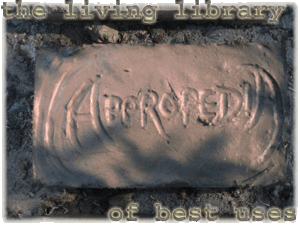
Introduction
- The objective of this project is to create a solar cooker out of local invasive species and waste materials. We want to create a device that can pasteurize water and be an alternative to the use of fossil fuels for cooking food. Our criteria for evaluating the appropriateness of technology are: use of local materials, efficiency, durability, ease of use, ease of construction, cost, impact on environment, impact on culture/ lifestyle, education or expertise needed for construction.
To make bullets use the asterix:
- Like this
- and two for the next indent
- and back to one...
- Similarly, numbered bullets are like this
- and multi-leveled like this
Literature Review
General Research on Parabolic Solar Cookers
- Parabolic solar cookers are devices for preparing food that do not require fuel. They concentrate the sun’s rays to one focal point where a dark pot or pan can be used to cook with. There are many advantages and disadvantages to using a solar cooker. Some of the advantages are: they can be used in places where there is little available fuel, they do not pollute, the outside of the parabolic shape does not get hot, they can be made out of recycled and local materials and they do not cost anything to operate. Some disadvantages are: the area to cook on is only big enough for one pot, cooking can only be done on sunny days, cooking time can take longer than when using a conventional stove or oven, the cooker may need to be refocused as the sun shifts. (Working Group on Development Techniques 1990)
- Since parabolic solar cookers do not require fuel, they are being experimented with in many developing countries around the world as an alternative and supplement to cooking with fire. In India, a study was conducted to assess the utility of parabolic solar cookers in household use. The criteria for the assessment included ease of operation, initial cost, need for training, aesthetics, and overall safety. The overall conclusion of the study was that the parabolic solar cooker has a pretty high utility but in order for them to be commercialized, “The utility on technical, behavioral and commercial aspects should be improved.” (Pohekar, Ramachandran 2006).
According to the Solar Cooker Review, a man in Vietnam has started producing solar cookers made out of local baskets. The cookers consist of a basin surrounded by insulation set in a basket made of local materials. The solar cookers are well suited to the central and northern provinces of Vietnam which receive 2-3000 hours of sunlight a year (Solar Cooker Review 2000).
Parabolas and Paraboloids
- The three dimensional parabola, the paraboloid is the most efficient shape for solar cookers. Unlike box solar ovens, the parabolic shape has a central focal point where any light that hits the parabola’s walls will reflect into it. Using sunlight, the heat, along with the light, will reflect into that focal point and warm that spot. The cooking container should be located at the focal point so the maximum amount of heat will be used for cooking.
With the general equation for a parabola being: y = x², the focal point can be found by taking a point on the curve, (x, y) and putting it into the equation a = x²/4y with the variable, a as the focus (Stein, 1999).
Himalaya Blackberry
- The structure of the parabolic solar cooker will be made from the canes, or stems, of the locally invasive Himalaya blackberry. Canes will be harvested and dethorned so they can be woven into a parabolic basket shape.
- The Himalaya blackberry, Rubus procerus, is an evergreen that was brought to the United States from Europe in the early nineties (Everett, 1981). It has a vigorous trailing growth pattern and it is heavily thorned. Since the canes will be harvested during the winter months, they will be dried, sturdier, and easier to dethorn and manage. The Himalaya blackberry canes form parabolic curves, so when they dry and stiffen they will maintain the sturdy parabolic shape of the basket (Figure 1).
Figure 1: Himalaya blackberry cane.
- Although blackberries cannot withstand extreme climates and grow mostly during the springtime (Whatcom), the Himalaya has a rapid growth rate of around 20 to 50 feet per season (Bailey, 1961) causing it to spread and takeover areas. The Himalaya blackberry is an invasive, non-native species to Humboldt County, and California state government has provided funding for the removal of the species throughout regional and state parks (California Department of Parks and Recreation, 2005) so harvesting them for the basket will not have a negative environmental impact on the area.
Humboldt County Weather
- The amount of clear days in Humboldt County is the major inconvenience with local solar cooking. Eureka has around 78 completely clear days per year with the most during September and October and a monthly average of 6.5 clear days (Western Regional Climate Center). Although most days are not completely clear, there are still partly cloudy days where it will clear up long enough to cook something around midday to early afternoon.
This is italic text.
This is a level two heading (etc)
This is bold text.
- This is indented text. Click Show preview, to see what this looks like.